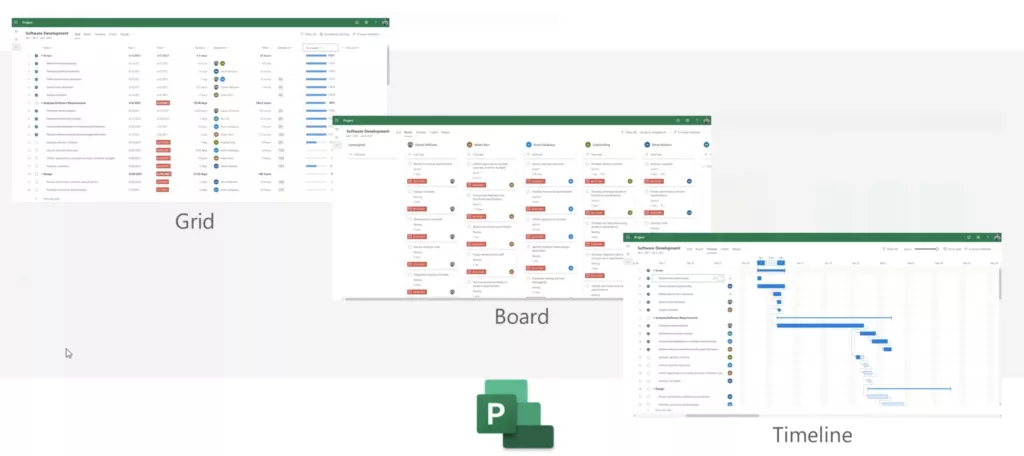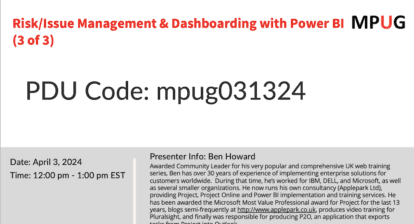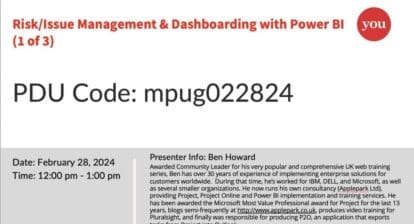In these dynamic times, Microsoft is at the helm of a pivotal change in how we perceive work and project management. The tech giant’s new philosophy has brought forward a promising vision for modern work management, emphasizing the need for teams to work in their own flexible ways, while still delivering the desired results for executives.
Reimagining Microsoft Project
At the heart of this shift is the reimagining of Microsoft Project. The intent is to empower companies to streamline operations and achieve better results by aligning investments with projects, leveraging resources, and promoting agility, simplicity, and global collaboration. A pivotal part of this reimagination is the introduction of more intuitive and consistent tools within the Microsoft platform.
This transformation is primarily aimed at bridging the existing work management gap. In today’s fast-paced world, not everyone is a trained project manager. Yet, many find themselves tasked with managing projects. There’s a clear need for tools that make this process accessible, ensuring even those without formal training can successfully oversee projects.
One of the chief challenges of today is the issue of information silos. With distributed teams—sometimes scattered across the globe—there’s an inherent chaos in the way work progresses. This can be further exacerbated by the plethora of tools available in the market, leading to disjointed, non-collaborative efforts. There’s a genuine need to harness our data more effectively and provide a cohesive big picture for decision-makers.
Microsoft’s Forward Vision
Microsoft’s future vision for project management saw its beginnings in the fall of 2019. They announced ambitious plans to reimagine Project and gradually phase out Microsoft Project Online—a long-standing pillar for project management and portfolio management solutions.
However, this isn’t an abrupt end. Organizations are encouraged to transition to the new platform when it best aligns with their timelines. The thrust of innovation is now squarely focused on the new Microsoft Project, which we’ll delve into.
Historically, Microsoft Project Professional users leaned on Project Online, built on the foundation of SharePoint or SharePoint Online, for portfolio management solutions. This is the platform that’s being transitioned from.
The focal point today is the shift to the new “Project for the web” and the capabilities offered by Microsoft’s Power Apps technology. These are designed to provide a fresher, more modern user interface for managing portfolios of projects. On another note, Microsoft has also introduced Project Operations in Dynamics 365. Aimed primarily at professional services organizations, this solution focuses on aspects like billing external clients or internal chargebacks. For the scope of this article, however, our focus remains on “Project for the web”.
A Glimpse into Project for the web
For those yet to experience it, “Project for the web” is crafted to be an intuitive, powerful project management tool. It’s accessible to everyone, from seasoned project managers to casual or occasional users. The interface showcases board-like planners, spreadsheet-inspired grids for plan creation, and the traditional timeline or Gantt chart views. At its core, the aim is to offer a novel, browser-based experience that simplifies collaboration. This is further bolstered by features such as co-authoring and the solid foundation of the Power Platform.

Speaking of the Power Platform, many might already be familiar with its components like Power BI for data analytics or Power Automate for workflow automation. Central to our discussion is Power Apps—a low-code/no-code technology that facilitates custom application development. It’s worth noting that “Project for the web” is built on this platform.
In terms of data management, the backend has shifted away from SharePoint. Instead, data from “Project for the web” now resides in the Dataverse, a departure from the Project Online architecture. For those contemplating a switch to this new technology, Microsoft’s commitment is evident. Microsoft’s CEO, Satya Nadella, emphasized that Power Platform, along with Microsoft 365 and Dynamics 365, remains core to the company’s strategic direction.
A significant integration to highlight is the compatibility of “Project for the web” with Microsoft Teams. Given the widespread use of Teams for content, collaboration, and meetings, this integration ensures that projects can benefit from features like posts, conversations, and files, making it a hub for other project-related tools and applications.
Dataverse’s storage capabilities aren’t merely for individual users. Its real power lies in enabling a more comprehensive portfolio solution via Power Apps. This provides a panoramic view of all projects beyond just the scheduling data.
For organizations or individuals hesitant about crafting solutions from scratch in a low-code/no-code environment, Microsoft has a solution. Partnering with OnePlan, they’ve developed a pre-built Power App. Known by various names such as the project accelerator or the PPM accelerator, its primary purpose is to augment the scheduling capabilities of “Project for the web”. This ensures functionalities like project requests, portfolio aggregation, and program management are seamlessly integrated.
In conclusion, Microsoft’s direction with “Project for the web” offers promising horizons for both seasoned and occasional project managers. With a modern, collaborative interface and the power of the Power Platform, the future of project management looks both intuitive and comprehensive.
[Stay tuned as we further delve into the intricacies of this transformation and what it means for end-users and organizations.]
This article contains highlights from OnePlan’s vendor showcase webinar – Introducing OnePlan: The Future for Microsoft Project Users – being provided by MPUG for the convenience of our members. You may wish to use this transcript for the purposes of self-paced learning, searching for specific information, and/or performing a quick review of webinar content. There may be exclusions, such as those steps included in product demonstrations, or there may be additions to expand on concepts. You may watch the on-demand recording of this webinar at your convenience.
Elevate your project management skills and propel your career forward with an MPUG Membership. Gain access to 500+ hours of PMI-accredited training, live events, and a vibrant online community. Watch a free lesson and see how MPUG can teach you to Master Projects for Unlimited Growth. JOIN NOW







Mark Webster
As a long-time user, administrator, and architect of Project Server/Online solutions for large and complex organizations, I find myself increasingly frustrated – and bordering on infuriated – with the level of disdain and disregard for my client’s needs shown by Microsoft. P4W, in its current iteration, is no more powerful than Wrike, Asana, or Monday. To abandon PS/PO for P4W would destroy a mandated, compliant, EV-based complex tool with a shiny toy. In a feature-for-feature comparison of PO vs. P4W, the missing capabilities list contains the very features that drove my customers to use PS/PO in the first place. But I’m not bitter.